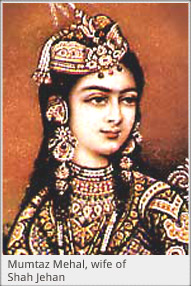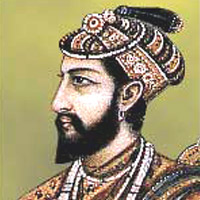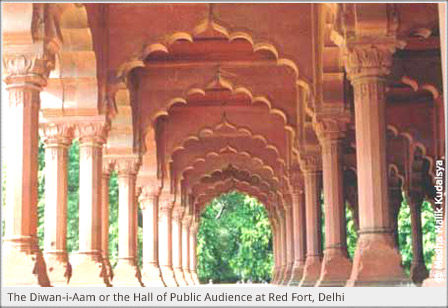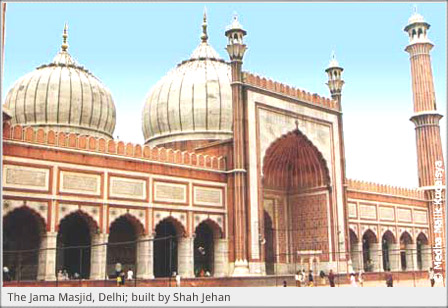Shah Jehan was one of Jehangir’s four sons. Born in 1592 in Lahore, his parents named him Khurram. He was smart, intelligent, and ambitious. He proved himself a great military commander and an able provincial governor during his father’s lifetime.

Shah Jehan ruled for three decades. After becoming emperor in 1628, he found no difficulty in successfully ruling over the vast Mughal Empire. He was an ambitious ruler like his grandfather, Akbar. Shah Jehan chose honest people to be his governors and commanders in the army. He warned them to be fair in their dealing with the people. He is known in history as Shahinshah-i-Adil, or the “Just Emperor”. He worked long hours and kept an eye on every detail of administration of the Empire. He made the roads safe for travelers, severely punishing looters and robbers. He developed agriculture and improved trade with foreign countries. The result was that people became rich and the state revenue increased manifold.
Shah Jehan is renowned for his beautiful gardens. But besides developing famous gardens, he made full use of the royal treasury on state buildings like schools, hospitals, and mosques. Shah Jehan’s numerous grand and beautiful buildings standout to this day. The most famous among the grand buildings is the Taj Mehal at Agra, in present-day India. It was built in memory of his beloved wife, Mumtaz Mehal. It took over 15 years to complete and cost 90 million rupees. The Taj Mehal is deemed to be one of the Seven Wonders of the World. It is a noble monument of conjugal love and fidelity. According to Rabindra Nath Tagore, it is a “tear on the cheek of eternity”.
In September 1657, Shah Jehan fell ill. The physicians were not hopeful about his recovery. He even made his last will and testament. As soon as the news of his illness reached his four sons, Dara Shikoh, Shuja, Aurangzeb and Murad, they all started making preparations to capture the throne. Aurangzeb who succeeded in his efforts, kept his aged father imprisoned until his death, allowing one of his sisters to look after him. Shah Jehan died in 1666. He was laid to rest beside his beloved wife, Mumtaz Mehal.
This article was last updated on Sunday, June 01, 2003





